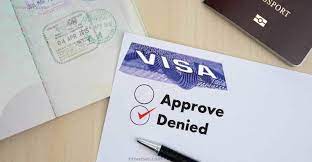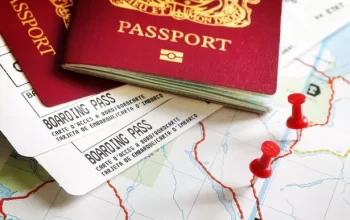Welcome to our blog, where we unravel the mysteries of travel and visas! If you’re planning a trip to Canada, understanding the different types of ETA visas is crucial. From exploring the vibrant city life in Toronto to immersing yourself in the breathtaking natural wonders of Banff National Park, Canada offers something for every traveler. But before you pack your bags and embark on this exciting journey, let us guide you through the various ETA visa options available – because knowing which one suits your needs can make all the difference between a smooth entry or unexpected obstacles. So buckle up and get ready to navigate the world of Canadian visas like a pro! CANADA VISA ETA TYPES
Introduction to ETA Visas for Canada
ETA (Electronic Travel Authorization) is a mandatory requirement for foreign visitors traveling to Canada. It was introduced by the Canadian government in 2015 as a faster and more efficient way of screening travelers before they enter the country. This system applies to citizens from visa-exempt countries who were previously able to enter Canada without any pre-authorization.
ETA visas are electronically linked to your passport and are valid for up to five years, or until your passport expires, whichever comes first. They allow you multiple entries into Canada for stays of up to six months at a time.
In this section, we will provide an overview of ETA visas for Canada, including what they are, who needs one, how to apply, and other important information.
What is an ETA Visa?
An Electronic Travel Authorization (ETA) is an entry requirement for visa-exempt foreign nationals traveling by air to Canada. It is not a physical visa sticker or stamp that you need in your passport but rather an electronic document linked directly to your passport number. CANADA VISA REQUIREMENTS
Before the implementation of this system, travelers from certain countries could enter Canada with just their passport and did not require any pre-authorization. However, with ETA visas now in place, these visitors must obtain approval before boarding their flight.
eTA vs. Traditional Visa: What’s the Difference?
When planning a trip to Canada, one of the most important things to consider is the type of visa you will need. However, with the introduction of Electronic Travel Authorization (eTA) in 2015, travelers now have another option besides the traditional visa. In this section, we will explore the key differences between eTAs and traditional visas to help you understand which one would be best suited for your travel needs.
1. Application Process
The biggest difference between an eTA and a traditional visa is the application process. For an eTA, applicants can easily apply online by filling out a simple form and paying a small fee. The process is quick and convenient as it eliminates the need to visit an embassy or consulate in person.
On the other hand, applying for a traditional visa involves more steps and can be time-consuming. Applicants are required to gather various documents such as passport copies, flight itineraries, bank statements, etc., and submit them along with their application at an embassy or consulate.
2. Validity Period
Another major difference between eTAs and traditional visas is their validity period. An eTA is generally valid for up to 5 years or until the expiration date of your passport (whichever comes first). This means that once approved, you can use your eTA multiple times within its validity period for trips to Canada.
In contrast, traditional visas usually have fixed validity periods based on the purpose of your travel and other factors determined by Canadian immigration authorities.
Business Visa
Business Visa is a type of ETA visa that allows foreign nationals to enter Canada for business-related purposes. This includes attending conferences, conducting market research, negotiating contracts, and other activities related to their profession.
To be eligible for a Business Visa, the applicant must have a valid passport from an eligible country and meet the requirements set by the Canadian government. They must also provide proof of their business purpose in Canada, such as an invitation letter from a Canadian company or organization.
There are two types of Business Visas available under the ETA system – Single Entry and Multiple Entry visas. The main difference between these two visas is the number of times an individual can enter Canada during its validity period. A Single Entry visa allows one entry into Canada while a Multiple Entry visa allows multiple entries.
Single Entry Business Visa:
A Single Entry Business Visa is suitable for individuals who need to enter Canada for short-term business trips. It is valid for up to six months from the date of issue and allows one entry into Canada during this time. Once the individual leaves Canada, they will not be able to re-enter using this visa unless they apply for another one.
Multiple Entry Business Visa:
A Multiple Entry Business Visa is ideal for individuals who frequently travel to Canada for business purposes. It is usually valid for up to five years or until the passport expires, whichever comes first. This visa allows multiple entries into Canada during its validity period, with each stay limited up to six months.



